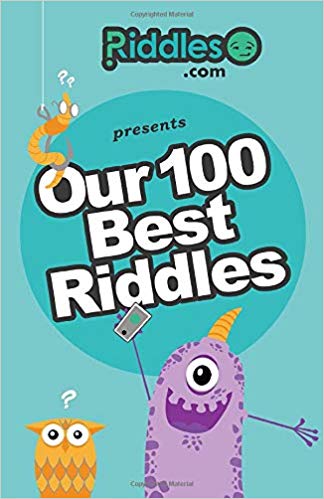Enter a keyword into the search box. The riddle search will check to see if the word is in the Title, Riddle, or Answer and return results if they exist.
"Tha" Riddles - Next 10 of 947.
Riddle:
If you screw a light bulb into a socket by turning the bulb toward the right with your right hand, which way would you turn the socket with your left hand in order to unscrew it while holding the bulb stationary?
Answer: To the right. It's always the same direction.
Riddle:
Farmer Brown came to town with some watermelons. He sold half of them plus half a melon, and found that he had one whole melon left. How many melons did he take to town?
Answer: Three melons!
Riddle:
An old parchment describes the location of buried treasure: "On the island there are only two trees, A and B, and the remains of a gallows. Start at the gallows and count the steps required to walk in a straight line to tree A. At the tree turn 90 degrees to the left and then walk forward the same number of steps. At the point where you top drive a spike into the ground. Now return to the gallows and walk in a straight line, counting your steps, to tree B. When you reach the tree, turn 90 degrees to the right and take the same number of steps forward, placing another spike at the point where you stop. Dig at the point exactly halfway between the spikes and you will find the treasure." However, our hero when he gets to the island finds the gallows missing. Is there any way he can still get to the treasure?
Answer: A simple experiment with a ruler and paper shows that any position for the gallows leads to the same point.
Riddle:
Why are 1999 ten pound notes worth more than 1993 ten pound notes?
Answer: Because there are more of them!
Riddle:
A man buys a rope from a woman for $3.00 and hands the woman a $10 bill. The woman goes into the grocery store next door to get change. She returns and gives the man $7.00. After the man leaves, the clerk from the store comes and says, "Hey, that was a counterfeit bill you gave me." The woman gives the clerk a good bill.
How much has the woman lost?
Answer: Seven dollars plus the rope.
Riddle:
There is a barrel with no lid and some wine in it. "This barrel of wine is more than half full," said Curly. "No it's not," says Mo. "It's less than half full." Without any measuring implements and without removing any wine from the barrel, how can they easily determine who is correct?
Answer: Tilt the barrel until the wine barely touches the lip of the barrel. If the bottom of the barrel is visible then it is less than half full. If the barrel bottom is still completely covered by the wine, then it is more than half full.
Riddle:
You and your friend are trapped in a space prison on an alien planet. The alien warden decides to give you and your friend a chance at freedom. He states that your friend shall be allowed to temporarily leave your cell and try to escape through an electric gate guarded by a 3-number passcode. If your friend answers incorrectly or says anything but the final answer, your friend will be thrown back in the prison. A computer will then tell your friend 4 clues if requested. If this passcode is properly answered, you and your friend shall be freed. You are then blindfolded and your friend leaves. You hear your friend walk down one of the numbered hallways to the gate. Your friend asks for the first clue. A voice answers, "The numbers are in ascending order so that the number is greater than or equal to the number before it." Your friend asks for the second clue. The voice says, "The product of the 3 numbers is 36." Your friend asks for the third clue. The voice says, "The sum of the numbers is the number of the hallway you entered." Your friend pauses for a moment and thinks. Your friend then asks for the fourth and final clue. The voice says, "The largest number only appears once in the code." You hear a beep. You hear your cell door swing open. You are free! What was the code?
Answer: 2,2,9
Riddle:
There are 50 horses and 50 kings riding along an old dirt road. They came to a peach tree with 50 peaches. Each took one, yet there were still 49 left. How is this possible?
Answer: Each is the name of one of the kings and he's the only one that took one!
Riddle:
What is the highest number that can be written with three digits?
Answer: (9⁹)⁹ = 9³⁸⁷⁴²⁰⁴⁸⁹, which is a number with more than 369 million digits.
Riddle:
I have 10 red socks and 10 blue socks in a drawer. How many socks must I take out to ensure that I have at least one matching pair? One how many to ensure I have at least a pair of red and a pair of blue?
Answer: Three for one pair, and twelve to ensure one pair of each color.

